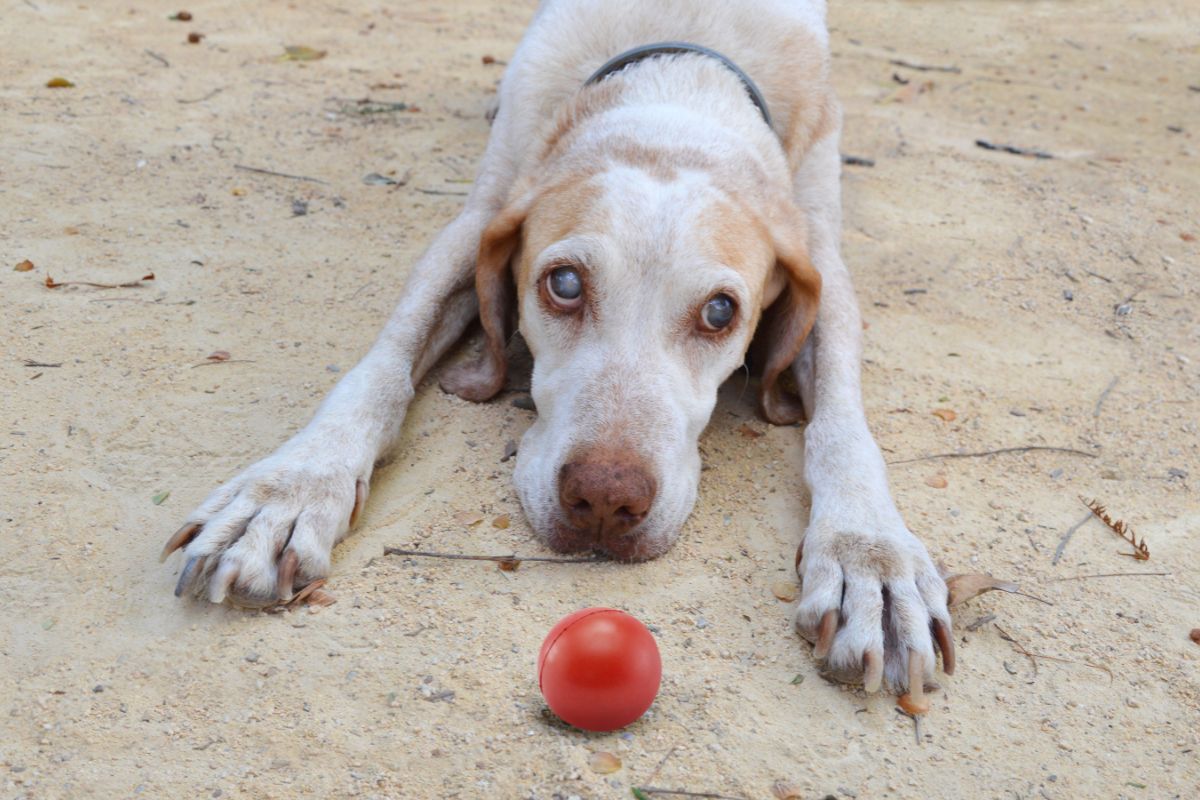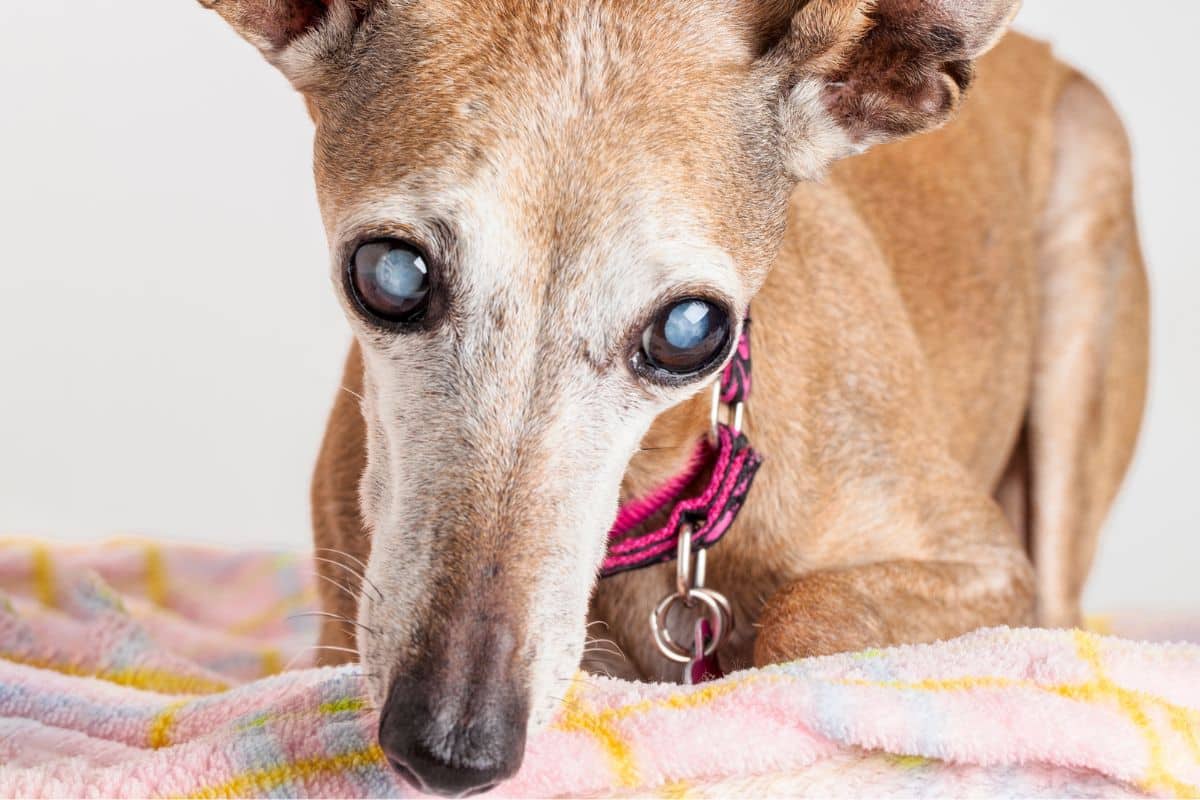There are few things more pleasant and more rewarding than caring for a loving dog. That’s probably why you found yourself on this very website after all! These loveable and adorable creatures can take a lot of work to care for, but it’s so worth it in the long run!
The problem is, some dogs are much easier to care for than others, and some dogs have very specific needs that must be catered for in order to give them a long and happy life. Blind dogs, in particular, can require a little bit of additional care, and you may need to care for them differently from how you would care for a dog with healthy vision.
But don’t worry, if you are planning to care for a blind dog soon, and you want to do it right, then you have come to the right place because we are going to show you exactly how to do it! Read on down below to get started.
How Do You Care For A Blind Dog?
You might be pleasantly surprised to hear that caring for a blind dog only requires a little bit of extra effort than would be required for a more able-bodied dog.
In order to care for a blind dog you will, however, need to make a few important adjustments that can help to make their lives easier and much safer.
Dogs have great hearing, so it is important to take advantage of that when caring for a blind dog, as you can provide them with sounds that give them a sense of space, and help them to interact with the world around them. You can also give them clearer commands that help them to remain safe in situations that may require better eyesight.
What Commands Should You Teach To A Blind Dog?
There are a number of unique commands that you will want to teach to a blind dog, and they are designed so that they can more safely navigate the world around them.
Of course, you will want to teach your blind dog the traditional commands of ‘Stop’ and ‘Sit’, as these can be very useful when taking the dog out for a walk off of its leash, so you can be sure its high energy can be reined in.
You should also teach a blind dog commands like “Step up” and “Step down”, so that they can more easily navigate obstacles like steps and other obstructions.
Take your dog out into your garden, or any other outdoor space, and encourage them to recognize what each of the commands means.
Teach them to turn “Left” and “Right” by carefully pulling them in that direction as you say the associated commands. Be sure to positively reinforce the commands with treats so that your dog will more easily recognise the importance and meaning of them!
Even when you aren’t giving commands to your dog, it is also highly recommended to talk to them often. This will not only help them to recognise your voice, but will also help them to always be sure of your relation to them. This helps them to feel safe.
How Should You Create Space For A Blind Dog?

If you are caring for a blind dog, you will need to make sure that your home is adequate for the job.
The most important thing to do in your home when caring for a blind dog is to ensure that sharp corners and edges are padded and that there aren’t any tripping hazards or anything that might obstruct the dog’s path.
Be sure to also care for stairs. If your dog is allowed upstairs, it is recommended to install a baby gate so that the dog does not find itself tumbling down them!
A handy tip that many owners of blind dogs have mentioned is to help the dog to recognize certain rooms. You could use carpets and rugs with different textures, so that your dog knows what room they are in, as soon as they feel the floor beneath their paws.
You can even make use of smells, by placing blankets with specific smells into each room that they can use as signposts.
Blind dogs can also become overwhelmed quite easily, especially as their senses of hearing are so heightened. Make sure to provide them with a safe space that they can quickly recognize and curl up in, just in case they need to unwind and calm down.
How Should You Feed A Blind Dog?
When it comes to feeding a blind dog, one of the most important things is consistency. This ties into how you should cater the space around a blind dog so that it is easy for them to navigate around.
Set aside a distinct space in your home that is specifically for hosting your dog’s food and water. Make sure that you keep the food and water in this space of the home so that the dog can recognize where food and water are should they need them.
Do not move the food and water around once the dog has memorised the positioning because doing this could cause them to become very disoriented and panicked. Food and water are great anchors in helping your dog to understand its sense of space at home.
We recommend serving up food in a slow-feeder dog bowl, because blind dogs may have a harder time discerning when they have eaten too much. These bowls will ensure your dog is able to pace itself.
To Wrap Up
Blind dogs only need a little bit of extra care, because they are able to rely on the keen senses of hearing and smell that they are known for. However, there are things you can do that make a blind dog’s life easier.
Make sure you have a great rapport with the dog, so that they can trust you, and use you as an anchor for navigating the world around them, just by hearing your voice.
Make sure to also keep your home space clear, and give the dog plenty of strong smelling signposts that they can use to anchor themselves in the space and never become lost!



